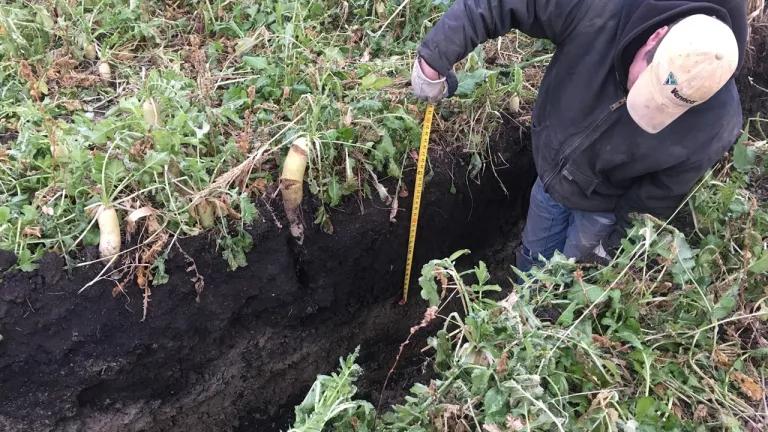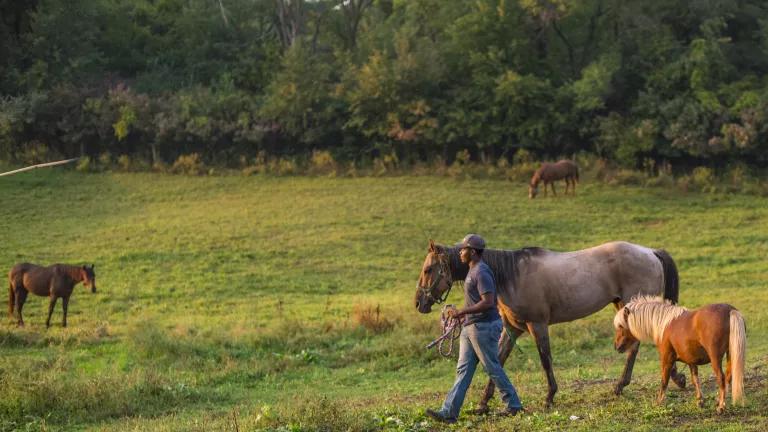NRDC Pathways Report: Nature-Based Solutions Vital to Meeting Climate Goals
Climate hope remains alive, and the NRDC Pathways Report identifies ways forward for natural climate solutions.
It can be easy to look around the world and feel climate despair. Whether it’s devastating flooding, heatwaves, or wildfires, the suffering already being felt across the globe is visceral and real. But a new report from NRDC provides hope, demonstrating that it’s not only possible to still meet our climate goals—there are in fact multiple pathways to get there. But the longer we wait to act, the harder and more expensive it is to reach our targets.
Each of the pathways modeled by NRDC contains multiple pillars of action, including carbon-free electricity, energy efficiency, electrification of vehicles and appliances, decarbonized fuels, and natural climate solutions (such as protecting forests, wetlands and expanding sustainable farming practices). The report demonstrates that swift and bold action now not only helps us meet our climate goals, but also benefits the economy, nature, and communities in the process.
Natural Climate Solutions Are a Key Pillar of Climate Success
While transitioning off fossil fuels is the first and most important climate action, each pathway also shows how vital it is to leverage natural and working lands in meeting our goals. A failure to protect our land sinks makes the remaining pathways more expensive and difficult. Forests, farms and wetlands collectively can sequester an additional 500MMT of CO2e while providing important co-benefits, such as enhanced biodiversity, improved water quality, and increased resiliency.
The significance of the land sink should not be interpreted as a fig leaf to delay or avoid the bold action needed to move us to a clean energy economy. But NRDC’s report demonstrates that staying under the 1.5 degree threshold becomes significantly harder and more expensive without the benefit of natural systems doing what they do best—cycling and storing carbon, the building block of the natural world.
Policy Options to Enhance Natural Climate Solutions
To ensure that we not only protect the existing land sink, but expand it in order to give us a greater chance of climate success, we must put in place policies that recognize and support the landscape’s ability to help us meet our climate goals. These opportunities exist for forests, farms and wetlands.
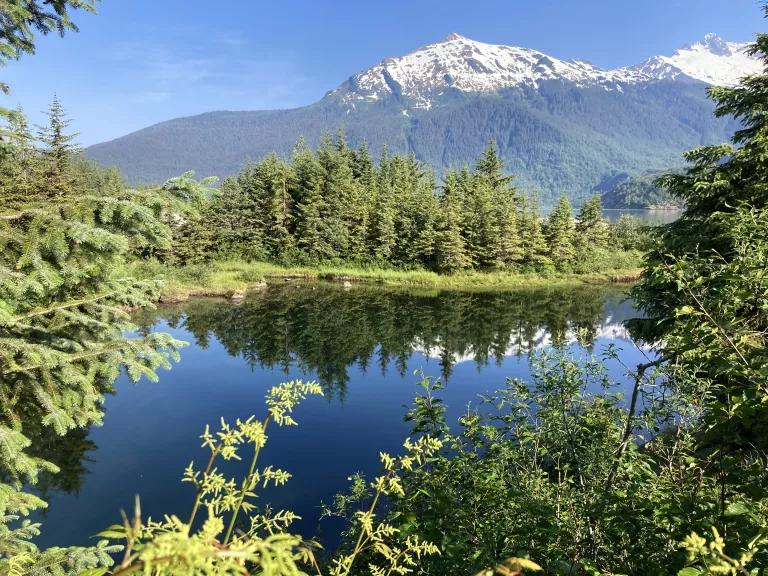
Forested wildlands, such as Steep Creek in Tongass National Forest, Alaska, play a vital role in sequestering carbon emissions.
Forests
US forests offer nature climate solution opportunities on the same scale as croplands. Though widely logged over the country’s first two centuries, many of these forests are recovering. Today, they collectively sequester nearly 15 percent of our annual carbon emissions. And they can do much more. That’s potential we can’t afford to leave on the table if we’re going to stem climate change.
The biggest potential gains are on federal lands—lands that belong to you and me. That’s where we still have substantial old growth, which stores the most carbon per acre, and mature trees and stands, which are developing into old growth. A new report found that the feds manage 30 million acres of old growth and 80 million acres of mature forests. These older trees and stands pull in the most carbon in absolute terms, and store it most securely. They are the key to how much forests contribute to zero carbon pathways.
Under President Biden, the primary stewards of our federal forests—the U.S. Forest Service and Bureau of Land Management—are upping their game on carbon storage. On Earth Day 2022, Biden issued an Executive Order, highlighting the irreplaceable role of federal forests in the climate and biodiversity fights and calling on those agencies to develop policies so they can cash in on that potential. Already, the Forest Service has moved to protect forested wildlands in Alaska’s vast Tongass rainforest. And it’s reconsidering a massive Oregon project that would have logged big, carbon-rich trees.
Now, both agencies are requesting public input on how best to deliver critically needed climate gains nationwide. And they are specifically looking for input on how to better protect mature federal forests.
The answer is straightforward. Get your local managers out of the business of logging big trees and mature stands. Everywhere. Do it in a permanent regulation, adopted with full public process, Tribal consultation, and rigorous environmental review, that creates accountability and will endure.
Despite significant reforms that Biden officials have secured, nationwide both the Forest Service and BLM continue to authorize timber companies to mine out big, old trees and cut mature forest stands. Local managers, long beholden to mills, offer a bunch of rationales for this logging. None holds water.
The one most often advanced is reducing fire risk. But that’s crosswise with the science. Extreme fire behavior is driven by young trees and small materials that burn super-hot. Big trees with thick, hard-to-ignite bark and branches and needles high up above the flames are not the problem. The reality is that the cool conditions inside mature stands and the fire-resistance of mature trees dampen fire behavior.
If Biden appointees can end this abusive logging they will make a major contribution to the climate fight. They will ensure our forests hasten progress down the existentially critical zero carbon pathway. And they will create a global model for forest management, setting the bar for other forest-rich nations.
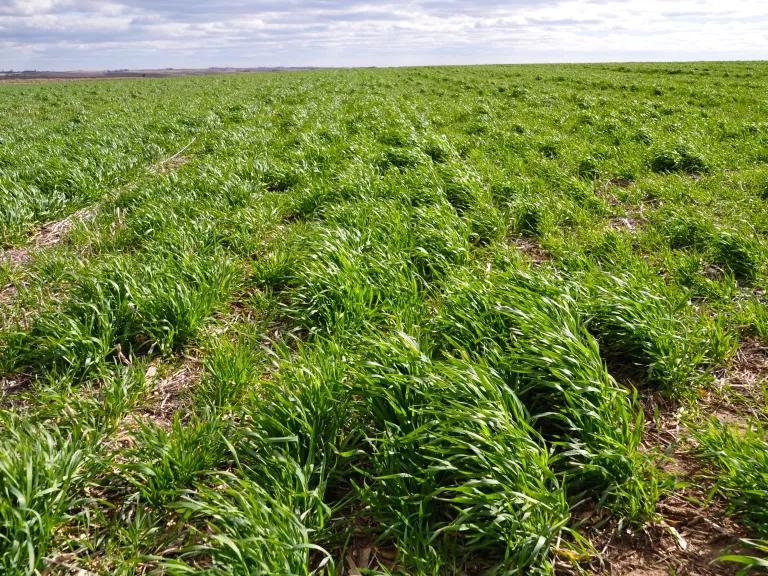
Cover crops can help increase soil carbon storage, improve water quality and reduce erosion at the same time.
Farms
About 900 million acres of U.S. land are currently devoted to agriculture. While U.S. agriculture is currently a net contributor of greenhouse gas emissions, accountable for roughly 10% of total U.S. emissions, the sheer vastness of the agricultural landscape makes it an important partner in solving the climate crisis. Importantly, many of the agricultural practices that reduce agricultural emissions also provide multiple co-benefits for nature, farmers, and neighboring communities. For example, planting “cover crops” between commodity crop rotations can not only reduce greenhouse gas emissions and increase carbon sequestration—they also improve water quality, reduce erosion, and help prevent crop loss due to difficult weather conditions.
Progress has already been made to scale up investments in the types of agricultural practices that enhance rather than deplete the land sink. The landmark Inflation Reduction Act included $20 billion for conservation agriculture—the largest investment in agriculture since the Dust Bowl. And the Biden Administration has been piloting a program that gives farmers who plant cover crops a break on their crop insurance premiums, just like safe drivers might get cheaper crop insurance. This federal program was modeled after bipartisan programs in several Midwestern states, including Iowa, Illinois, and Wisconsin. But there’s much more that can be done.
The upcoming Farm Bill offers an opportunity to build on these initial investments, by doubling down on what’s working. The Farm Bill is a piece of comprehensive legislation that directs billions of dollars for agriculture, and it is negotiated every five years. The current Farm Bill expires in September 2023, and its replacement is being crafted now. Several proposals being discussed would help ensure that the investments made by the Farm Bill get us closer to our climate goals, including the COVER Act, which would make the cover crop pilot program permanent. And it will be important to protect the hard-fought gains of the Inflation Reduction Act in the Farm Bill negotiations, too, as now is not the time to undo the climate wins we have already achieved.
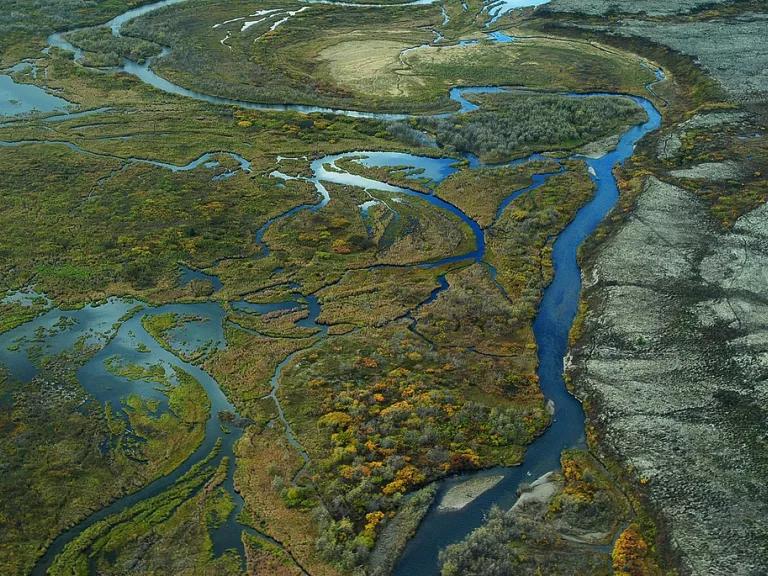
Mature wetlands store significant amounts of carbon both above and belowground.
Wetlands
Mature wetlands store an outsized amount of carbon for the amount of land they cover, with peatlands and coastal wetlands accounting for up to 22% of the carbon stored in US soils, despite covering only 1.6% of the land area. However, wetland areas remain highly vulnerable, covering less than half the acreage they covered in the 1700s. Wetlands accumulate carbon slowly, and recovering from disturbances such as drainage and land use conversion can take centuries. Ensuring that wetlands continue to play a role as a natural climate solution, protect communities from floods, and serve as rich biodiversity habitat requires us to make protecting and restoring wetlands a top priority.
To safeguard wetland ecosystems across the US, we need to prioritize them in efforts such as the 30x30 initiative, expand the USDA’s Agroforestry and Riparian Forest Buffer Initiatives, and keep the the hard-won environmental protections in the Clean Water Act intact.
NRDC’s Pathways report shows that climate hope remains alive. Meeting our climate targets is possible, but the longer we wait to take action, the harder and more expensive it becomes. It’s vitally important to act now to protect and expand the capacity of forest, wetland and agricultural landscapes—and their associated land sinks—that help us achieve our goals.


